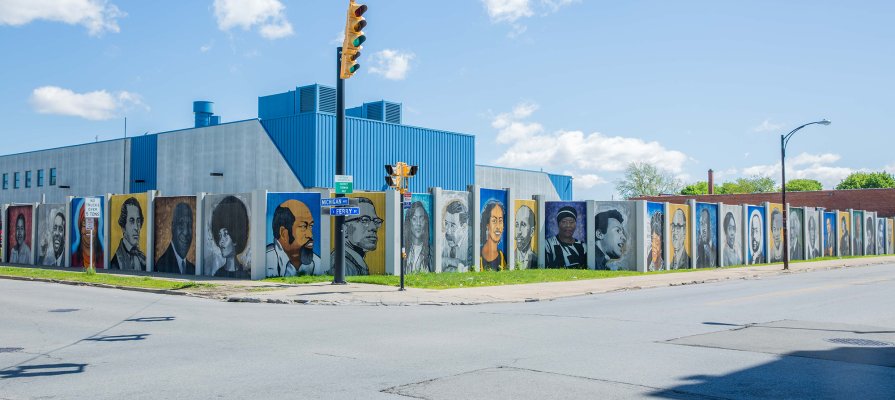A Space for Dialogue

The Freedom Wall, 2017—by John Baker, Julia Bottoms, Chuck Tingley, and Edreys Wajed—on the corner of Michigan Avenue and East Ferry Street. Photograph by MK Photo.

The Freedom Wall, 2017—by John Baker, Julia Bottoms, Chuck Tingley, and Edreys Wajed—on the corner of Michigan Avenue and East Ferry Street. Photograph by MK Photo.
Grade Level: 8–12
Keyword: Collaboration
In this lesson, students will explore the historical and contemporary civil rights activists depicted in the mural The Freedom Wall. They will research the leaders who are portrayed, connect with a local activist in their own community, and learn about the creation of the mural. Students will collaborate to create a mural for their school that will depict activists from their own community using a unique portrait technique that will simulate the texture of the wall on which The Freedom Wall was created. They will also explore the difference between temporary and permanent installations.
The Public Art Initiative was established and is supported by leadership funding from the County of Erie and the City of Buffalo.
This program has been made possible through the generosity of KeyBank in partnership with First Niagara Foundation. Additional support has been provided by Jeff and Karin Meyer, Marion and Philip Henderson, and Maria Scrivani and John Lipsitz.